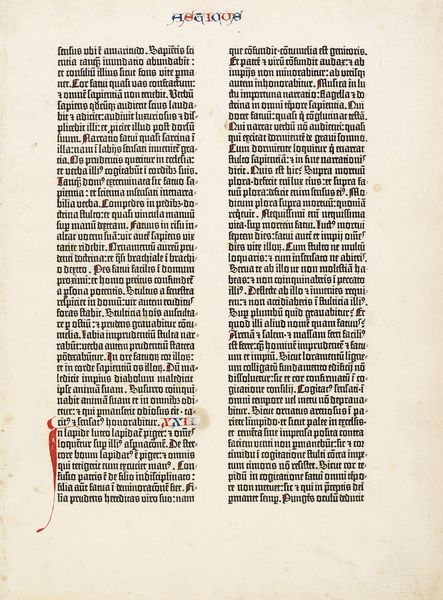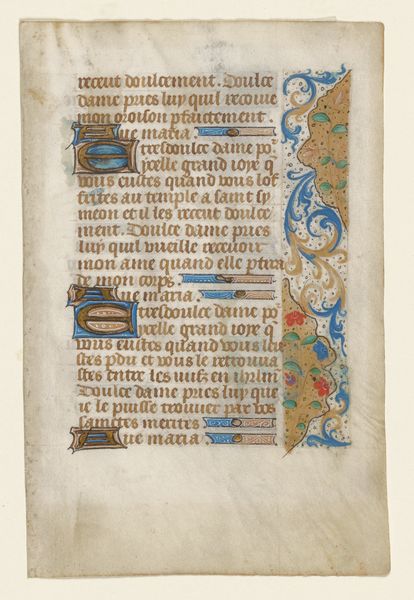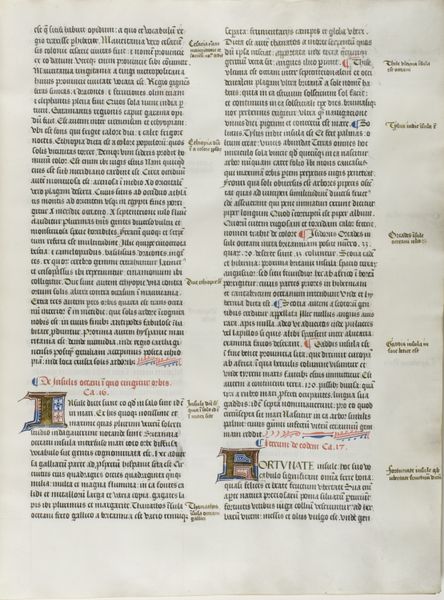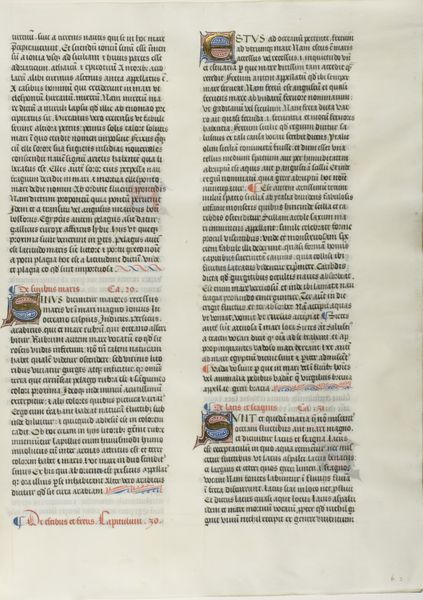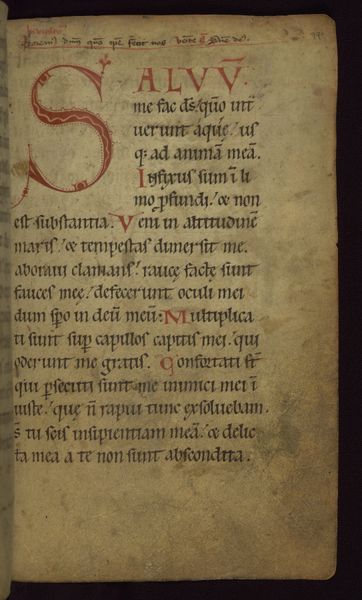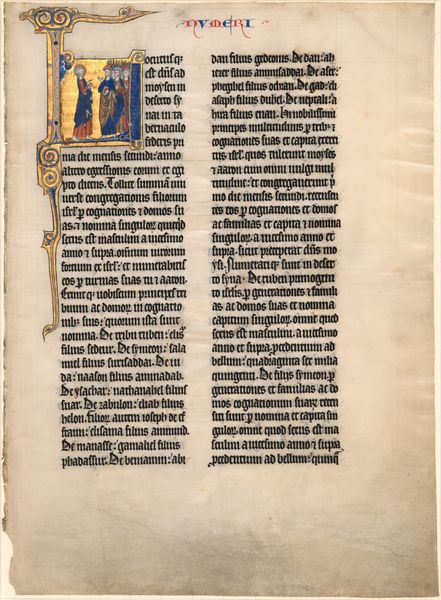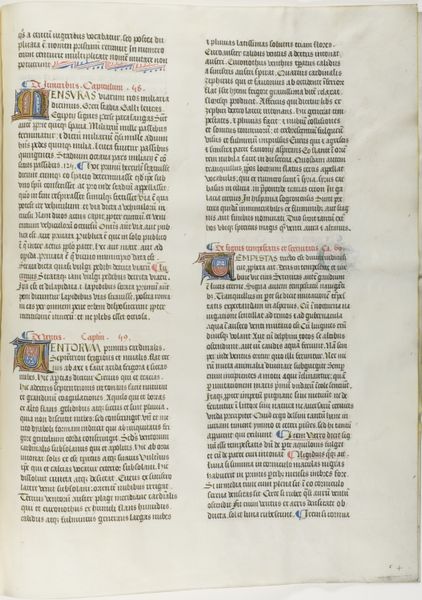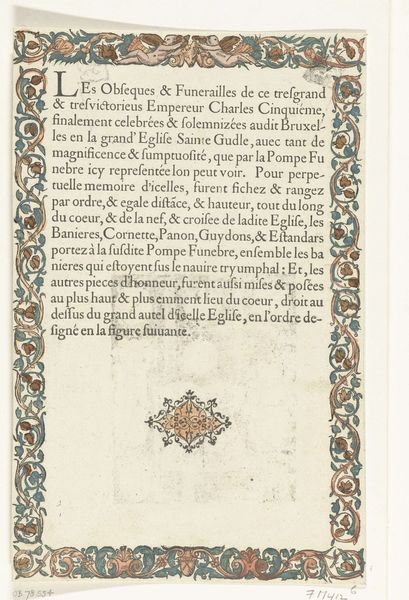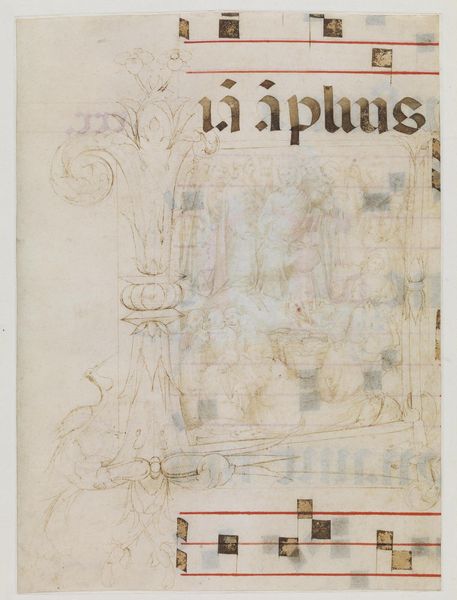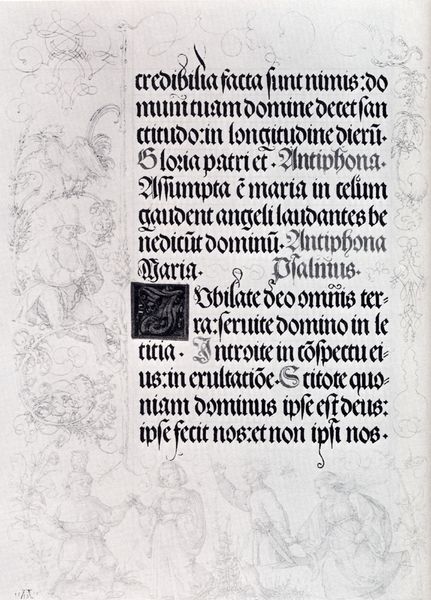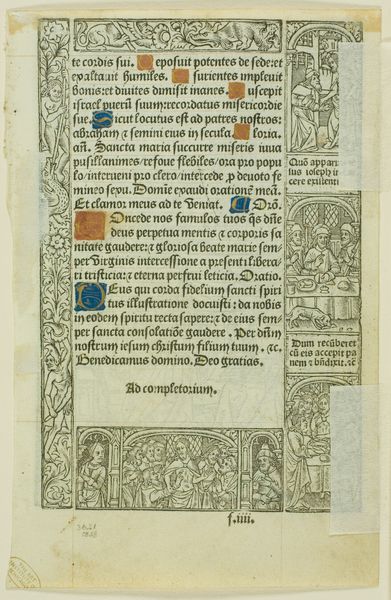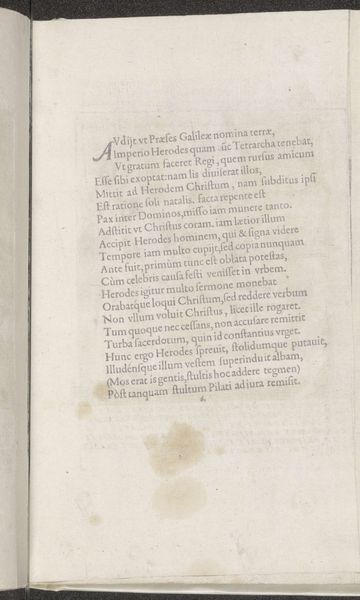
textile, paper, ink
#
medieval
#
book
#
gothic
#
hand drawn type
#
textile
#
paper
#
ink
#
genre-painting
#
miniature
#
calligraphy
Dimensions: 13 3/8 x 9 in. (33.97 x 22.86 cm) (image, sheet)
Copyright: Public Domain
Curator: Here we have an illuminated leaf from a missal, dating from around 1460. It’s currently held in the collection of the Minneapolis Institute of Art. Editor: The first thing that strikes me is the meticulous, almost obsessive, detail of the calligraphy, set against the humble paper support. It makes me wonder about the intensive labor and artistry needed to create something like this. Curator: Indeed, the social function of such illuminated manuscripts was crucial. They weren’t merely aesthetic objects but played a significant role in religious practices, specifically the celebration of the Mass, reinforcing the Church's cultural authority. Editor: That's fascinating. I'm more drawn to the physical aspects: the types of ink, the process of applying them to the paper—which seems like it may be textile-based. I imagine the preparation alone was incredibly time-consuming. How the production context affected both its appearance, meaning and consumption interests me the most. Curator: Consider also how these materials were acquired and distributed. Trade networks played a major role. Pigments like ultramarine, derived from lapis lazuli, would have been imported from distant lands, elevating the book’s perceived value and significance. Editor: The color is restrained, a mostly austere palette emphasizing the text. The letter "I" is beautifully rendered in alternating lines of blue and red and seems to leap off the page as it entwines down its left margin. It certainly seems a choice dictated as much by available pigments as it was symbolic concern. Curator: Exactly! And the miniature illustrations found in some missals added to their appeal and provided narrative content, although this particular leaf concentrates more on the calligraphic skill, underscoring its liturgical purpose in a grand spectacle within the Mass itself. Editor: Seeing such intricate work forces you to recognize all the anonymous laborers—the scribes, the binders, and the suppliers—who contributed to its making and how such divisions between labor, artistry and sacred ritual created value both materially and socially. It’s all tied together so beautifully and carefully on this one page. Curator: A single page that illuminates the interplay between the religious establishment, skilled craftsmanship, and artistic practice in the late Middle Ages. Editor: It reminds me how the examination of material production opens doors to broader social histories, questioning and enriching our comprehension of high and low art within broader medieval making practices.
Comments
No comments
Be the first to comment and join the conversation on the ultimate creative platform.
